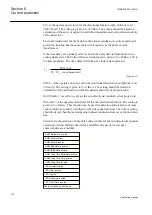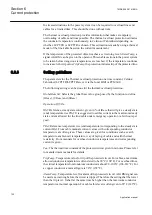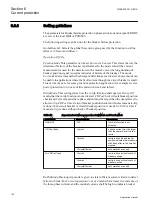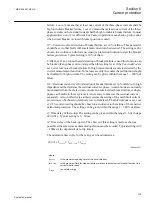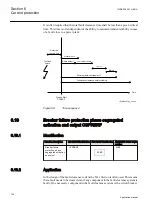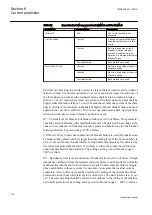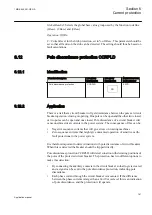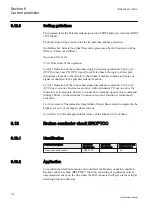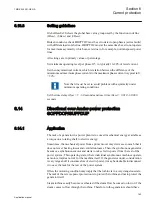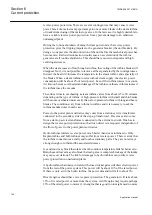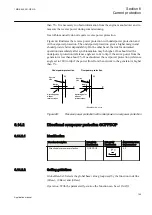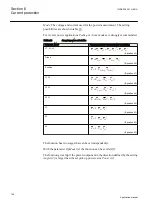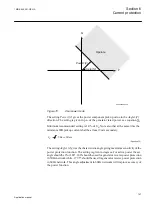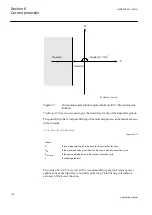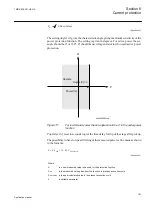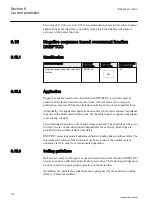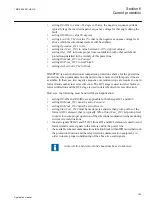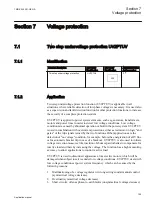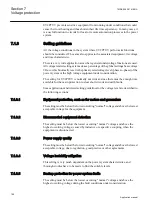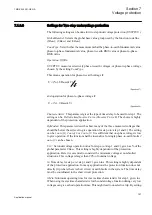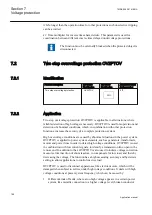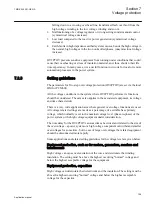
reverse power protection. There are several contingencies that may cause reverse
power: break of a main steam pipe, damage to one or more blades in the steam turbine
or inadvertent closing of the main stop valves. In the last case, it is highly desirable to
have a reliable reverse power protection. It may prevent damage to an otherwise
undamaged plant.
During the routine shutdown of many thermal power units, the reverse power
protection gives the tripping impulse to the generator breaker (the unit breaker). By
doing so, one prevents the disconnection of the unit before the mechanical power has
become zero. Earlier disconnection would cause an acceleration of the turbine
generator at all routine shutdowns. This should have caused overspeed and high
centrifugal stresses.
When the steam ceases to flow through a turbine, the cooling of the turbine blades will
disappear. Now, it is not possible to remove all heat generated by the windage losses.
Instead, the heat will increase the temperature in the steam turbine and especially of
the blades. When a steam turbine rotates without steam supply, the electric power
consumption will be about 2% of rated power. Even if the turbine rotates in vacuum,
it will soon become overheated and damaged. The turbine overheats within minutes if
the turbine loses the vacuum.
The critical time to overheating a steam turbine varies from about 0.5 to 30 minutes
depending on the type of turbine. A high-pressure turbine with small and thin blades
will become overheated more easily than a low-pressure turbine with long and heavy
blades. The conditions vary from turbine to turbine and it is necessary to ask the
turbine manufacturer in each case.
Power to the power plant auxiliaries may come from a station service transformer
connected to the secondary side of the step-up transformer. Power may also come
from a start-up service transformer connected to the external network. One has to
design the reverse power protection so that it can detect reverse power independent of
the flow of power to the power plant auxiliaries.
Hydro turbines tolerate reverse power much better than steam turbines do. Only
Kaplan turbine and bulb turbines may suffer from reverse power. There is a risk that
the turbine runner moves axially and touches stationary parts. They are not always
strong enough to withstand the associated stresses.
Ice and snow may block the intake when the outdoor temperature falls far below zero.
Branches and leaves may also block the trash gates. A complete blockage of the intake
may cause cavitations. The risk for damages to hydro turbines can justify reverse
power protection in unattended plants.
A hydro turbine that rotates in water with closed wicket gates will draw electric power
from the rest of the power system. This power will be about 10% of the rated power.
If there is only air in the hydro turbine, the power demand will fall to about 3%.
Diesel engines should have reverse power protection. The generator will take about
15% of its rated power or more from the system. A stiff engine may require perhaps
25% of the rated power to motor it. An engine that is good run in might need no more
Section 6
1MRK 505 291-UEN A
Current protection
144
Application manual
Содержание Relion REQ650
Страница 1: ...Relion 650 series Breaker protection REQ650 Application manual ...
Страница 2: ......
Страница 20: ...14 ...
Страница 26: ...20 ...
Страница 48: ...42 ...
Страница 82: ...76 ...
Страница 90: ...84 ...
Страница 160: ...154 ...
Страница 178: ...172 ...
Страница 264: ...258 ...
Страница 288: ...282 ...
Страница 302: ...296 ...
Страница 330: ...324 ...
Страница 338: ...332 ...
Страница 339: ...333 ...

